#maritime Silk Road
Explore tagged Tumblr posts
Text
A Prayer for God’s Blessings on Families, Nations, and the World, Day 81, China
Dear Heavenly Father, Thank you for today. Thank you for what you do for me each and every day and for that which I fail to notice. Thank you for taking care of my family, friends, and acquaintances. I ask that you shield and protect them and guide them in this life. Bring them safely home to you. Let them know that you are there for them. Never let me forget your presence in my life and guide…
#gratitude#Almighty God in Heaven#China#Faith#Forbidden City#God#Great Wall#Green Tea#Guilin#Heavenly Father#high cost of living#Jesus#Karst mountains#Maritime Silk Road#Oolong Tea#Panda Conservation#Perpetual Adoration#poverty#prayer#Pu-reh tea#Terracotta Warriors#Yuanyang
2 notes
·
View notes
Text
Ancient Seafaring
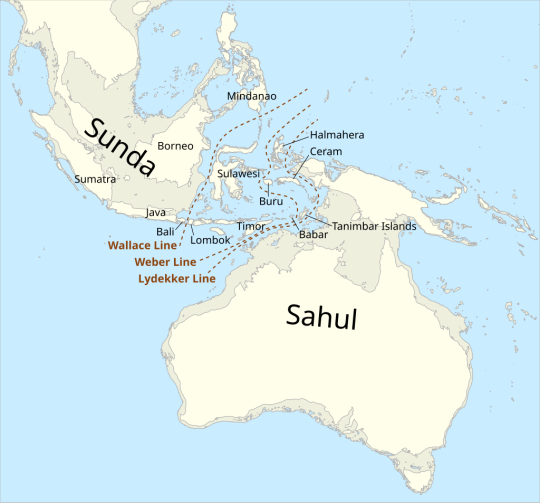
By listfiles/Kanguole - Own work, based on file:map of Sunda and Sahul.png and usingCoastline from Natural Earth 1:50m Physical Vectors125m depth contour derived from 2-Minute Gridded Global Relief Data (ETOPO2) v2, NOAA National Centers for Environmental Information, using gdal_contour (from GDAL)., CC BY-SA 4.0, https://commons.wikimedia.org/w/index.php?curid=127823375
Earliest evidence that hominids took to the sea on boats was from tools and trace evidence left on a rhinoceros skeleton from about 631,000-777,000 years ago, likely to the Philippine island of Luzon, the largest island of the Philippines. At this time, Homo erectus was most likely the voyager. At that time, with the lowered sea levels because of the ice sheets that pushed as far as the 40th parallel in some places, covering maybe 30%, drawing water out of the oceans. While this made it so that many of the islands off of the southern tip of India were joined together, reaching the Philippines would have taken at least a short sea voyage.
It wasn't until about 65,000-53,000 years ago that Homo sapiens crossed what is now known as the Wallace line to reach what is now Australia. The winds at the time would have been favorable for what would have been at least a 55 mile (88 km) journey with no land in sight. Winds would have changed about 58,000 years ago, making the crossing much more unlikely, which points to a single period of colonization of Australia.
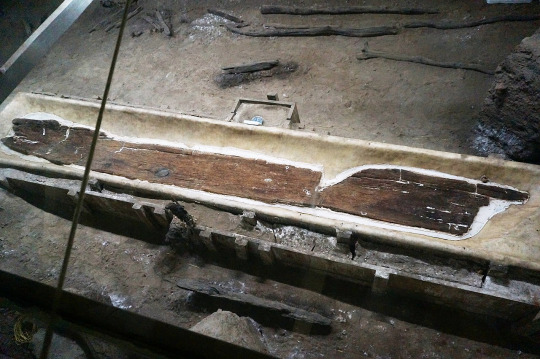
By Cat's diary (猫猫的日记本) - Own work, CC BY-SA 4.0, https://commons.wikimedia.org/w/index.php?curid=34243737
About 35,000-32,000 years ago was the beginning of maritime trade networks as evidenced by Philippine and Wallacea obsidian appearing one nearby islands, though exactly how people traveled by sea isn't know, whether by rafts or dugout canoes. These trade routes likely began by following the coastlines and moving by between line-of-sight islands.
The earliest evidence of whaling appears around 6000 BCE in Korea. Most likely, the method involved many small boats to cut the whale off from the ocean and herding it to land with noise and perhaps arrows.
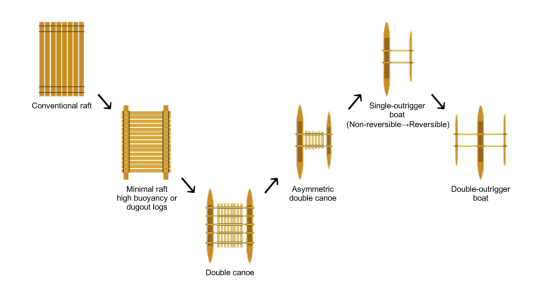
By Obsidian Soul - Own work, CC0, https://commons.wikimedia.org/w/index.php?curid=75764398
Between about 3000 and 1500 BCE, with the use of catamarans, outrigger ships, and tanja or crab claw sails, the Austronesian people began leaving Taiwan and colonizing islands as far reaching as Easter Island and New Zealand to the east and Madagascar in the west. They also supported a trade network that was the precursor of the Maritime Silk Road, which began in the 2nd century BCE. These trade routes gradually began using the monsoon winds, which would blow in one direction for half the year and switch directions in the other half, making it possible for bulk trading and for the Maritime Silk Road to develop. Maritime trade routes grew safer than overland routes due to a lack of bandits, improved navigation technologies, and lack of 'extortionate tolls by local potentiates.'
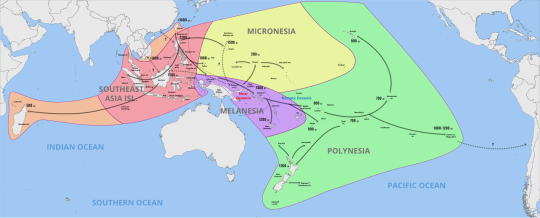
By Pavljenko - Own work using:Map first shown in Bellwood et al. (2011) and taken from Benton et al. (2012), CC BY-SA 4.0, https://commons.wikimedia.org/w/index.php?curid=116424449
Evidence of the spread of Austronesian people is evident in the languages spoken on the many islands they reached. There are many words that are derived from Sri Lankan or south Indian languages, such as the various words for 'ship' including paṭavu, paḍava, padau, folau, halau, and wharau. Austronesian peoples used advanced navigation techniques, using both constellations and the timing of stars rising over the horizon to navigate. There also appears to have been a 2,000 year pause in expansion, to about 700 CE, when the Polynesian people group moved into the Cook Islands, Hawaii, Easter Island, and Aotearoa, New Zealand.
The Chinese began trading with the Austronesian peoples during the Han dynasty (220 BCE-200 CE), calling them 'Strange Things of the South' (Nánzhōu Yìwùzhì — 南州異物志). Despite this, or maybe because of it, they didn't develop their own navy until the Song Dynasty (960-1279 CE).
#seafaring#indian ocean seafaring#ancient seafaring#maritime silk road#human development#human history
2 notes
·
View notes
Text
580 pieces of relics retrieved from ancient shipwrecks-Xinhua
via Xinhua, 19 October 2023: 580 relics from Ming Dynasty shipwrecks in the South China Sea shed light on China's ancient Maritime Silk Road.
via Xinhua, 19 October 2023: Nearly 580 artefacts, including porcelain, pottery, and timber, have been discovered in two ancient shipwrecks in the South China Sea. These findings, announced by China’s National Cultural Heritage Administration, date back to the Ming Dynasty (1368-1644) and were found about 1,500 meters below sea level. The relics offer concrete evidence of China’s historical…
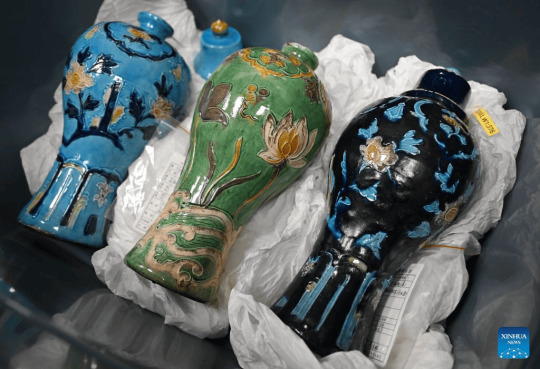
View On WordPress
#ceramics#Maritime Silk Road#Ming Dynasty (kingdom)#shipwrecks#South China Sea#underwater archaeology#underwater cultural heritage#wood
3 notes
·
View notes
Text

#arctic Silk Road#Greenland#inuit#maritime Silk Road#northern sea route#Matt Bracken#Matthew Bracken
1 note
·
View note
Text
Terrible History Joke:
. “Why was the Maritime Silk-Road so popular with wheelchair users?”
. “Steppe-free access.”
0 notes
Text

Uh...super totally cool and not nerdy stuff....
Um nothing about the new discovery of Harrapan civilization shipyards at Lothal - the heart of the old south Asian civ.
And how that explains south Asian artifacts and more in cradle Mesopotamia and Egyptian sites and what that means for earlier old world trade, this stories, and back and forth religious perhaps influences too?!
Because it is officially now recognized as THE WORLD'S OLDEST PORT!!!!!
And they found foreign artifacts IN the shipyards too! So back and forth trade as well as obvy like mentioned the fact Indian artifacts showed up in the Persian Gulf coast.
But what's crazy is the fact there's networks of rivers and paths showing people traveled and traded TO Lothal (on their way) and then some from Lothal bought and traded onwards and some continued their journeys from there to Mesopotamia (today Iraq). That is huge!
Um...oh, and uh cars, and how to make a PVC tube snow ball when winter comes so I'm prepared to be the most dominant force on my block. Get rekt!
...also the history of sapphic pirates.
Oh, map representation of the water was from Nal Sarova and all the way up from Ahmedabad for how people could get to Lothal -- for some the boat trip was only two days on a boat with a little humped thatched roof over it.

Two days of river going comfortably and you could be at a trade epicenter (water NYC) then from there outward into the wider world to trade with other cradle civilizations. Idk if you get how fucking huge that is for a trader. Think about the stories traded back and forth, superstitions, myths, folktales, lives, and of course they money, goods, information. Learned people would travel ABSOLUTELY for the sake of knowledge and the new.
South Asia was home to the world's oldest residential university. Most of the cradle civilizations were more advanced than many give them credit for because they had built up the wealth/resources at the time to invest back into the collection and pursuit of knowledge so higher level learning through schools of various sorts and private tutelage and having just people dedicated to its pursuits (and libraries of course) all existed and could be funded/possible.
The old world was FAR more interconnected than people realize.
But this is freaking super duper cool.
The Silk Road maritime routes were absolutely documented. But that is a far way away from this period in time.
#google search#search history#Lothal#Mesopotamia#Egyptian#ancient world#ancient history#world trades#South Asia#Southeast asia#silk road#maritime history#oldest ports#persian gulf#Nal Sarova#definitely not nerdy stuff#internet search history#internet history#just writer things#just writer stuff#history is cool#how cool is this#look at this map
4 notes
·
View notes
Text

900 Artifacts From Ming Dynasty Shipwrecks Found in South China Sea
The trove of objects—including pottery, porcelain, shells and coins—was found roughly a mile below the surface.
Underwater archaeologists in China have recovered more than 900 artifacts from two merchant vessels that sank to the bottom of the South China Sea during the Ming dynasty.
The ships are located roughly a mile below the surface some 93 miles southeast of the island of Hainan, reports the South China Morning Post’s Kamun Lai. They are situated about 14 miles apart from one another.


During three phases over the past year, researchers hauled up 890 objects from the first vessel, including copper coins, pottery and porcelain, according to a statement from China’s National Cultural Heritage Administration (NCHA). That’s just a small fraction of the more than 10,000 items found at the site. Archaeologists suspect the vessel was transporting porcelain from Jingdezhen, China, when it sank.
The team recovered 38 items from the second ship, including shells, deer antlers, porcelain, pottery and ebony logs that likely originated from somewhere in the Indian Ocean.
Archaeologists think the ships operated during different parts of the Ming dynasty, which lasted from 1368 to 1644.

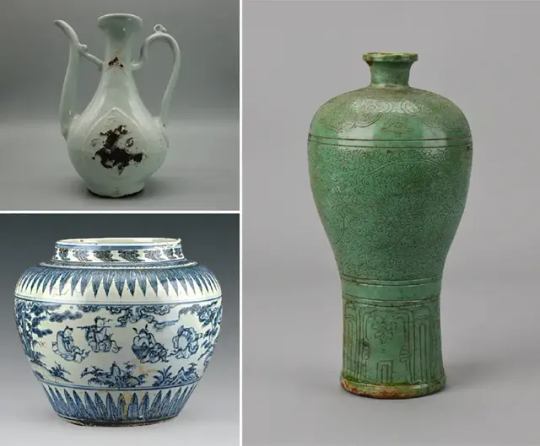
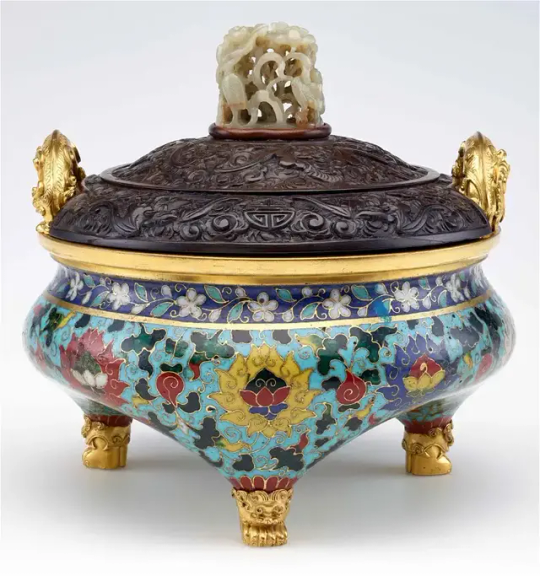
Many of the artifacts came from the Zhengde period of the Ming dynasty, which spanned 1505 to 1521. But others may be older, dating back to the time of Emperor Hongzhi, who reigned from 1487 to 1505, as Chris Oberholtz reported last year.
Archaeologists used manned and unmanned submersibles to collect the artifacts and gather sediment samples from the sea floor. They also documented the wreck sites with high-definition underwater cameras and a 3D laser scanner.
The project was a collaboration between the National Center for Archaeology, the Chinese Academy of Science and a museum in Hainan.
“The discovery provides evidence that Chinese ancestors developed, utilized and traveled to and from the South China Sea, with the two shipwrecks serving as important witnesses to trade and cultural exchanges along the ancient Maritime Silk Road,” says Guan Qiang, deputy head of the NCHA, in the agency’s statement.
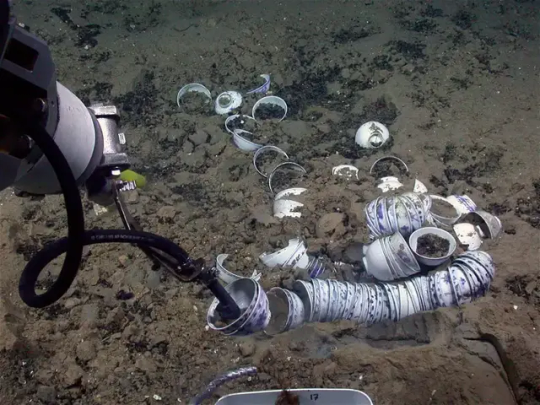

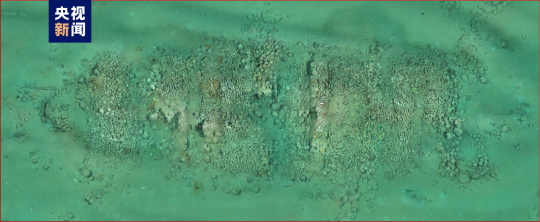
During the Ming dynasty, China’s population doubled, and the country formed vital cultural ties with the West. Ming porcelain, with its classic blue and white color scheme, became an especially popular export. China also exported silk and imported new foods, including peanuts and sweet potatoes.
The period had its own distinctive artistic aesthetic. As the Smithsonian’s National Museum of Asian Art writes, “Palace painters excelled in religious themes, moralizing narrative subjects, auspicious bird-and-flower motifs and large-scale landscape compositions.”
The shipwreck treasures aren’t the only recent discoveries in the South China Sea, according to CBS News’ Stephen Smith. Just last month, officials announced the discovery of a World War II-era American Navy submarine off the Philippine island of Luzon.
By Sarah Kuta.


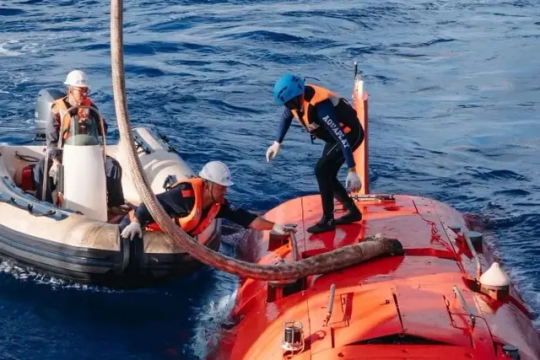

#900 Artifacts From Ming Dynasty Shipwrecks Found in South China Sea#island of Hainan#Ming dynasty#shipwreck#ancient artifacts#archeology#archeolgst#history#history news#ancient history#ancient culture#ancient civilizations#ancient china#chinese history#chinese art#ancient art
949 notes
·
View notes
Photo

This map traces the expansion of Buddhism from its origins in the Ganges Plain of Magadha (modern Bihar, India) during the 5th–4th century BCE when Siddhartha Gautama (the Buddha) attained enlightenment. From this heartland, Buddhism spread along mainland trade routes like the Silk Road and maritime networks, often supported by royal patronage. It reached Sri Lanka by the 3rd century BCE and Central...
45 notes
·
View notes
Text
A lot of those who insist that Filipinos are Pacific Islander instead of (or, in addition to) Asian often rely on loose interpretations of the term Pacific Islander and the fact that the Philippines was used as a stepping stone in the Austronesian expansion to the east. What they ignore or may not know is that (1) the superficial similarities between Pacific Islanders and Filipinos are not unique to Pacific Islanders and Filipinos but with Austronesian-speaking peoples in general, including Austronesian-speaking Southeast Asians and (2) we Filipinos simply did not have as regular and as vigorous a contact with the Pacific Islands - if any - compared to the Asian continent. We still don’t.
Think about it: the earliest known trade network in the Philippines included what is now Taiwan and Southeast Asia, i.e., the Philippine jade culture which dates as far back as 2000 BC and lasted for 3,000 years. Nephrite jade from Taiwan was manufactured in the Philippines and distributed elsewhere in the nearby region. After that were the Sa Huỳnh-Kalanay Interaction Sphere from 500 BC through AD 100 and of course the so-called Maritime Silk Road during historical times. What followed was then the very familiar colonial era of Iberian, Dutch, and British presence in Asia.
The earliest Filipino artifact with a given calendar date is the Laguna Copperplate Inscription which was written in the year AD 900 using a Brahmic script in a combination of Sanskrit, Old Malay, Old Tagalog and/or Javanese. Upon the arrival of Magellan six hundred years later in 1521, it was a man titled rajah who greeted him in Cebu. Half a century later, the aged grandson of the sultan of Brunei was ruling Manila. To this day, among the lesser Hispanicized and Americanized ethnic groups across the Philippines, the Ivatan of Batanes speak a family of languages shared with the Tao of Orchid Island, Taiwan and the people of Bangsamoro have more in common with Bruneians, Indonesians, and Malaysians than they do with the Māori, Kanaka Maoli, or Fijians. Indigenous Borneans are closely related to Filipinos.
As for myself, I was raised in Davao where you’ll find Cebuano, Ilonggo, Kagan, Maguindanaon, Maranao, Mansaka, Mandaya, Manobo, Bagobo, Chinese Hoklo, Japanese, and Indian people live; no one local I’ve ever met has identified as Pacific Islander and there was never a question as to whether I was Asian or not because I was surrounded by fellow Asians. It’s certainly hard to deny it when your country of origin is one of the founding members of the Association of Southeast Asian Nations, attempted to make a Malaysian-Filipino-Indonesian confederation happen, and contains the title “Pearl of the Orient” as a lyric in the national anthem.
Does this look like an archipelago that kept close touch with polities and cultures across the Pacific Ocean for thousands of years? Does this look like a society that is more Pacific Islander than Asian?
69 notes
·
View notes
Note
Hello Cassie! I absolutely loved Sword Catcher and I am super excited for the Ragpicker King! My question was more on the inspiration and different cultures behind the different countries that were in the story. What countries or cultures did you use as inspiration to design the other countries, such as Malgasi, Marakandi, Sarthe, etc?
Lots of questions about this! I would say there aren't one to to one exactitudes — Castellane isn't France, but it is French-influenced. It's also got bits of Rome and Venice.
Malgasi is influenced by the Austro-Hungarian empire, Geumjoseon by ancient Korea, Shenzou by China, Kutani by Zanzibar (massive part of the maritime Silk Roads), Valderan by Spain, Hanse by Northern Germany, Marakand by ancient Persia, Nyenshantz by Russia, Sarthe by Italy. i'm sure there are more too!
118 notes
·
View notes
Text
On the Black Death in Africa and Asia, and the interconnected Middle Ages, by Eleanor Janega
“…See, the thing is that one of the weird myths I have to deal with all the time is that the Black Death was somehow a European experience, as opposed to an Afro-Eurasian one, and that Europeans were uniquely attacked by it because of something stupid/gross/superstitious that they did that everyone else avoided. Sometimes that’s people saying Europeans killed all their cats and so rats proliferated. Sometimes its people saying that Europeans didn’t bathe and therefore germs spread. (Of course, that’s beside the point anyway, because last time I checked fleas, which are what spreads plague, DGAF about how clean you are, but OK! Europeans still bathed! I am so tired!)
Sometimes, it’s people saying that Europeans’ backwards medical ideas involving the humoral system is to blame. (The entire Arabic world also believed in the humoral system! The only thing that works to treat the plague is antibiotics! No one in the entire world had medicine that could fight this until the nineteenth century!) Sometimes its people saying that Europeans threw sewage in the streets. (They didn’t, but I’ll have to talk about that another time. And also! Plague comes from fleas! Which do not live in human excrement anyway! So that’s really beside the point! And even when it’s pneumonic not bubonic it spreads via droplets! Which are in your breath! Not excrement! Oh my god!)
But here’s the thing, if any of that were true, (and it isn’t) that would mean that the theoretically smarter rest-of-the-world wouldn’t be affected by the Black Death at all because they were having a bath with their cat next to a fully piped sewage system while not believing in humoral theory or something.
Fun fact! No.
Now we might not have a lot of sources from the totally collapsed Silk Road cities, etc., but we do have a lot from our friends in the Middle East. And they are here to tell you that everyone was having a hard time, and they had a pretty clear idea of how the plague spread.
The historian Ibn al-Wardī (c.1291 – 1349), writing in Aleppo described the onslaught of the plague thusly:
“The plague frightened and killed. It began in the land of darkness [Northern Asia]. Oh what a visitor! It has been current for fifteen years. China was not preserved from it, nor could the strongest fortress hinder it. The plague afflicted the Indians in India. It weighed upon the Sind. It seized with it’s hand and ensnared even the lands of the Uzbeks. How many backs did it break in what is Transoxiana! The plague increased and spread further. It attacked the Persians, extended its steps toward the land of the Khitai, and gnawed away at the Crimea. It pelted Rum with live coals and led the outrage to Cyprus and the islands. The plague destroyed mankind in Cairo. Its eye was cast upon Egypt, and behold, the people were wide-awake.”
“… Oh Alexandria, this plague is like a lion which extends its arm to you. Have patience with the fate of the plague, which leaves of seventy men only seven. … The plague attacked Gaza, and it shook ‘Asqalan severyly. The plague oppressed Acre. The scourge came to Jerusalem … It overtook those people who fled to the al-‘Aqsa Mosque, which stands beside the Dome of the Rock. If the door of mercy had not been opened, the end of the world would have occurred in a moment. It, then, hastened its pace and attacked the entire maritime plain. The plague trapped Sidon and descended unexpectedly upon Beirut, cunningly. Next, it directed the shooting of its arrows to Damascus. There the plague sat like a king on a throne and swayed with power, killing daily one thousand or more and decimating the population.”[6]
He died of the plague.
Later, writing in Algeria, the historian Ibn Khaldûn (1332-1406) said of the pestilence that “It swallowed up many of the good things of civilization and wiped them out. It overtook dynasties at the time of their senility, when they had reached the limit of their duration. It lessened their power and curtailed their influence. It weakened their authority. Their situation approached the point of annihilation and dissolution. Civilization decreased with the decrease of mankind. Cities and buildings were laid waste, roads and way signs were obliterated, settlements and mansions became empty, dynasties and tribes grew weak. The entire inhabited world changed. The East, it seems, was similarly visited, though in accordance with and in proportion to (its more affluent) civilization. It was as if the voice of existence in the world had called out for oblivion and restriction, and the world had responded to its call. God inherits the earth and all who dwell upon it. … it is as if the entire creation had changed and the whole world been altered”.[7]
So, this is all very depressing, but I think it’s important that I lay this all out here for everyone’s perusal. Because the thing is until we begin to approach the medieval world as an interconnected place, weird myths are going to persist. As a Europeanist I am as guilty as anyone of aiding those who want to create a world where the Black Death is a phenomenon that happened on one continent to a group of uniquely stupid people. If no one sees the sources where our friends in Asia and Africa discuss the horrors around them, then of course they are going to continue to believe that the Black Death is something that happens when the Pope takes a disliking to cats. Or something.
I’m not writing this, however, just to defend Europe. I checked, these people are all dead and probably fine. I’m writing it because persisting with the myth that everywhere other than Europe was actually an enlightened paradise does a major disservice to those histories as well. Whole communities collapsed. Death was everywhere. The historians who wanted you to understand the chaos and pain happening all around them died of that plague and if we don’t witness that, then it’s for nothing.
Further, to pretend that only idiots couldn’t figure out that this pestilence was spread by germs in fleas is actually calling all our friends in Africa and Asia stupid as well. Because they also didn’t have germ theory, and they also died in huge numbers. This does not make them foolish.
We can’t go back in time and save the hundreds of millions of people who died of the Black Death in Afro-Eurasia. What we can do from our safe distance of almost seven hundred years, behind a wall of antibiotics, is to at least do them the service of acknowledging their experience and not calling them stupid. These were real people who lived in a complex world and were doing their best in it. Frankly, if you chose to ignore their suffering and their own testaments to it, then you are the one who is ignorant.
Societies are not a hierarchy, and we don’t need to impose one. We certainly don’t need to go back in time to do that either. Ideas of a divided medieval world where people from different continents were all separate and doing totally different things do nothing but serve to uphold outdated and racist ideas of the pre-modern world. Don’t do that in a rush to condemn Europe for its modern problems.”
42 notes
·
View notes
Text

got a new update up on my slick bladepunk dharmacore progression fantasy web serial.

THE KNIGHT VAGRANT is like if Dragonball had Maritime Asian aesthetics and overtly Buddhist themes.
maritime asia? think the Maritime Silk Road/Nirvana Route: from parts of South Arabia to India to SEAsia to South and East China to Japan to Korea,, the whole shebang of buddhism's extent. keep in mind its only really inspired by maritime asia: it's still a progression fantasy at its core. eventual god killing will ensue, but a god killing guided by enlightened compassion.
imagine if breath of the wild was built ground up from southeast asian aesthetics, ethics, and traditions. xianxia by way of southeast asian hindu-buddhist-animist esotery instead of only daoism
writing progression fantasy (think shonen anime, growing in power is the point) feels like home to me.
blurbs and shit ya'll:


#fantasy#writing#filipino#southeast asian#maritime asia#the knight vagrant#web serial#literature#novel#progression fantasy#action#martial arts#xianxia#wuxia
20 notes
·
View notes
Text
i’ve recently come across an insightful video analysis that was reposted on tiktok, explaining the Gaza situation in depth and touching on the geopolitical and economic motivations that background it, along with the potential impact from the ethnic cleansing and the active genocide of Palestinian people by zionists. here’s a summary with some links to more-reputable news articles:
-roughly around a month ago, netanyahu declared his plan for a “new middle east,” an economic corridor stretching from India to the European continent, through the UAE, Jordan, Saudi Arabia, and “israel.”
-due to the weakening of the US Dollar, this “new middle east” corridor serves as a hopeful (on their part) counter to China’s new ongoing “silk road.” it’s essentially a move for leverage on world economics, trade, and politics.
-Russia is the country with the largest proven reserves of natural gas. in 2022, Nord Stream 1 and 2 (Russia’s gas pipelines) were both blown up. sanction packages from EU ban Russian gas. no more Russian gas coming into Europe.
-Iran, the country with the second largest gas reserves, signs the Nuclear Deal in 2015-2016. the US backs out of the deal and reimpose harsh sanctions on Iran. Iran is barred from selling its gas and oil to Europe and others.
-with Russia and Iran out of the picture, “israel” (US-backed) proposes itself as a solution to EU’s gas shortages. in 2010, they find the Leviathan—a giant gas field in the middle east (Mediterranean Sea), off the coast of Palestine, Lebanon, and Syria.
-Syria initially declines offers over its gas reserves; the US now controls 1/3 of Syria and all its oil fields, and “israel” regularly bombs it’s most vital port (Latakia). another major port is in Beirut, which mysteriously exploded in 2020. both Syria and Lebanon’s maritime activity are limited, including in trade and gas exploration.
-Gaza, also having its own unexplored gas fields, has been under siege, under naval blockade since 2007. the only working port left in the coast is haifa port in “israel.” “israel” is now the only one able to explore gas and implement an economic corridor, like the proposed “new middle east.” what the US and “israel” have essentially done is killed off the competition, stole their goods, and cornered the market.
-in light of Europe’s gas shortages, to get them gas before winter, “israel” attempts to “stabilize” the region by solving “the Palestinian question”—more than displacement, they’ve resorted to ethnic cleansing and genocide. basically an acceleration of their plan.
-what Palestinian resistance groups have done in response was because they were backed into a corner. tooth and nail, life or death. it did not happen in a vacuum.
it has always been a move for natural resources; Palestine, Syria, Congo—every move for destabilization framed as intervention. it has always been greed for capital.
update:
it’s come to my attention that the video in question might have some more pro-Russian leaning stances, and so i’ve deleted the google drive link to the reposted tiktok and the link to the actual tiktok as i do not wish to platform the denial, partial or in whole, of the atrocities done to Ukrainian people. i will keep the summary up with some parts omitted because i still do think it is an insightful analysis in general and i do think the knowledge is still useful and relevant.
#peace is not the answer; liberation is the answer#resources#palestine#free palestine#free gaza#gaza strip#please look into other resources within the first and second tags in this post too
79 notes
·
View notes
Text
[Paper] Reuniting orphaned cargoes: Recovering cultural knowledge from salvaged and dispersed underwater cultural heritage in Southeast Asia
The 'Reuniting Orphaned Cargoes' project tackles the preservation and cultural significance of Southeast Asia's underwater artifacts by linking dispersed ceramics to their shipwreck origins using archaeological science, thereby promoting a deeper apprecia
via Marine Policy, 06 March 2024: Honoured to be part of this project – ‘Reuniting Orphaned Cargoes’ aims to address the challenges of underwater cultural heritage in Southeast Asia by reconnecting dispersed ceramics with their original shipwrecks, enhancing the cultural understanding of these artifacts beyond their commercial value. This initiative, in collaboration with Indonesian and…

View On WordPress
#ceramics#Maritime Silk Road#Martin Polkinghorne (person)#Natali Pearson (person)#Noel Hidalgo Tan (person)#research papers#shipwrecks#underwater cultural heritage#unprovenanced artefacts
0 notes
Text
Arctic Silk Road*
:

*ive covered the icebreakers and northern sea route with several posts over the years

1 note
·
View note
Note
went through the art on your site and I absolutely love motu's mask . I fully was under the impression he was a guy with a animal head at first, out of curiosity what was your inspiration for its design ?
THANK YOU!! I love that he gives the impression of having a real critter head. He would be so indignant about this, which is great, because we have to keep him humble.
so Motu came about after I replayed Morrowind for the first time as an adult, and I wanted to port my player character, Roan, into Moribund. I had put a lot of time into her story, and I guess by that point it had drifted from the source material enough that it was time to wiggle out onto dry land.
Back then, Moribund was distinctly lacking in war and sociopolitical beef, so I needed a real guy-of-all-time to fill the shoes of Dagoth Ur and the Sixth House... which is to say that yeah, the fact that Motu wears a mask, the burnished gold/bronze color, the engraved rays in his sideburns, those are all nods to the og

The earliest iterations of Motu's mask were modeled after baboons and macaques.

couldn't tell you why I gravitated to them. I think part of it was because I had written off primates for most of my life. I grew up a wolf girl and I thought that any animal without prominent fuzzy ears looked weird. (oh how the turn tables.)


Then he pivoted to a chimeric, set beast-type critter. I was younger and I didn't have the language for what I was observing at the time, but I was drawn to cynocephaly as a cross-cultural phenomenon. I also liked the idea of him being a visual wordplay on "dog-headed" and "god-headed"
I don't remember if I designed boondogs concurrently with him or after him, but that's the in-world justification for why he looks Like That. his mask is modeled after them.
I also had Roan and Koda's masks to reference. they were early examples of the mask-wearing practice in high Asthaom, and I knew I wanted Motu's mask to mirror theirs.




honestly, I feel like his mask is still a work-in-progress. I have a hard time wrapping my head around the planes of his cheeks and eyes. I think they can be done better.



(i swear i've drawn it more recently i just don't have access to my sketchbooks right now)
this also isn't unique to Motu, but his colors/geometry/asthaom's identity/my art in general draw heavily from settler and indigenous folk art in the Southwest, folk art in general, and also the cultural exchange happening in east asia during the time of the maritime silk road. people were making cheap crafts for mass export to satisfy the tastes of a wide variety of people who had never seen this part of the world, but this was also before the colonial powers that be, so It's a bunch of cultural and material knockoffs of knockoffs of knockoffs in a way that's not... like... always benign, but Different, sometimes less asymmetrical, and endearing to me as a knockoff myself LOL. it's an excuse to learn more and make clumsy efforts to reconnect with whatever tha hell it means to be japanese american.
now that I think of it, this comes full circle with Morrowind taking heavily from Indian history and Hindu cosmology. really playing a game of telephone with another guy's orientalism all the way back to the silk road. motu would hate this regardless. totally ruining his illusion of a pure and static cultural heritage.
but what can i say. i love when we pass around the Creature



[shishi] [shachihoko] [inugami]
:)
#uncaptioned tag#SORRY THIS TURNED INTO AN ESSAY#the thing about me is i love to extrapolate#thanks for inquiring. love motu. love to clown on him. enjoy#but not too much or it will get to his head#motu tag#ogh i dont know why these aren't chunking as photosets. rip ):
17 notes
·
View notes